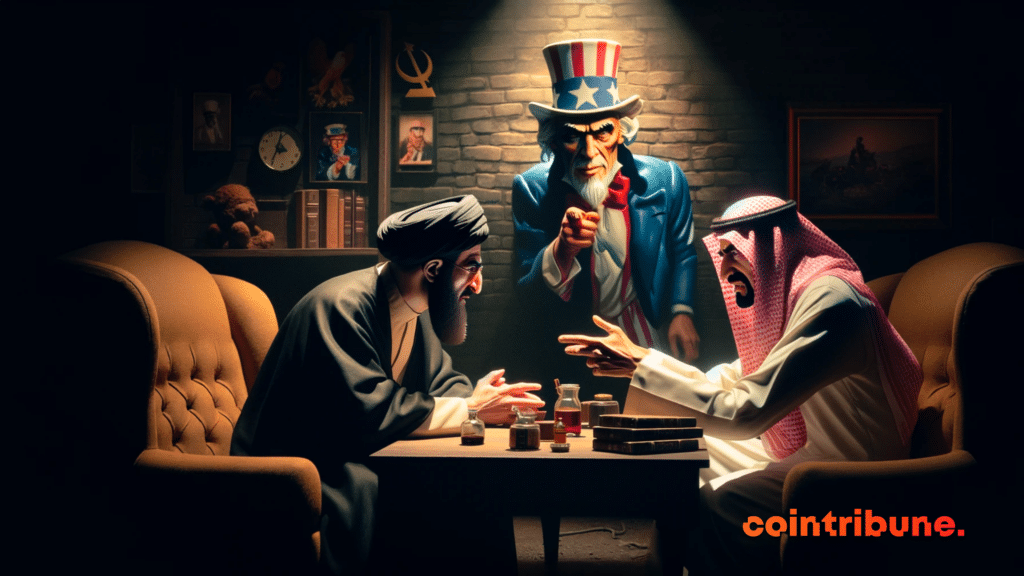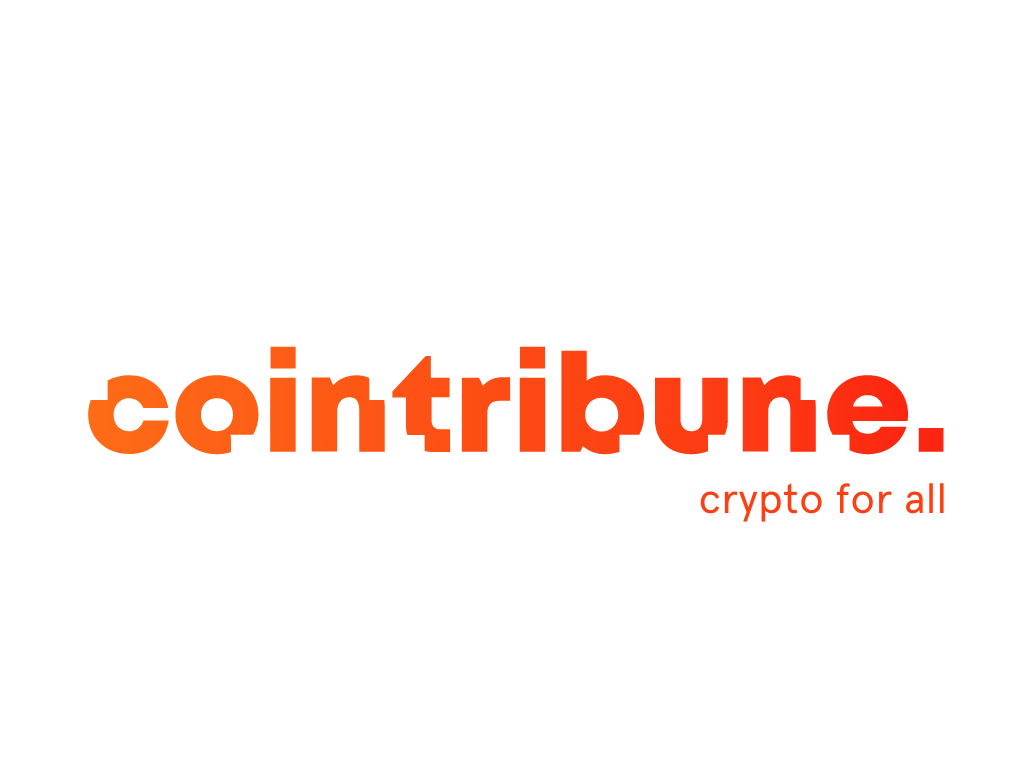Washington wants to annihilate Iran because of the petrodollar
0
0
Iran has recently called on the BRICS to form a common currency to replace the dollar. This challenge to the dollar by Iran, as well as increasingly by Saudi Arabia, explains why Americans want to end the Iranian regime. The end of the petrodollar would no longer allow the United States to finance its monstrous deficits through other countries.

The Devil Wears a Turban
This hero of American regime change and nation-building, George W. Bush, stated that Iran was “one of the lungs of the Axis of Evil.”
Iran deserved the United States’ help to Saddam Hussein in the 1980s, supplying him with chemical weapons and allowing those chemical weapons to later be turned against it.
Trump: Iran’s Foe
One of the rare times Trump received support from the deep state and media was when he tore up the Iranian nuclear deal and when he assassinated the Iranian general Qasem Soleimani. Trump is good when he kills brown people in distant countries.
Why then has Iran incurred the wrath of the American military-industrial complex? US regime hatred toward Iran is very much linked to the petrodollar system.
1971: The Genesis of Chaos
When Richard Nixon decoupled the dollar from its gold anchor in 1971, chaos ensued. It wasn’t just the Yom Kippur War (1973) and the resulting OPEC embargo that sent oil prices in America skyrocketing.
The dollar, as the new global reserve currency—floating and purely fiduciary—had lost its appeal relative to other sovereign currencies and precious metals.
The American-Saudi Scam
In order to avoid rampant hyperinflation, Nixon tasked then-Treasury Secretary William Simon with making a proposal to the Saudi monarchy.
Simon landed in Jeddah, Saudi Arabia, to get King Faisal to agree to “finance America’s growing deficit with his newfound oil wealth.”
In other terms, Americans promised to buy oil from Saudi Arabia and, in return, Saudis promised to bill global purchases exclusively in dollars.
Washington also went as far as to provide military aid and equipment to the Kingdom, a boon for Raytheon, McDonnell Douglas, and other Rand Corporation (US defense companies).
In exchange, Saudis guaranteed they would reinvest billions from their petrodollar revenue into Treasury bonds and fund the excessive spending, war, and redistribution of all subsequent American regimes thereafter.
Petrodollars: A Win-Win System?
From a public finance perspective, it seems like a win-win solution.
Saudis would benefit from protection against their geopolitical foes and the US from a new place to offload significant sums of public debt.
Moreover, the Saudis could place their dollars in relatively safe and reliable investments in the United States—what is known as “petrodollar recycling.”
By spending on oil, the United States was creating new demand for American debt and dollars.
Over time, thanks to Saudi Arabia’s dominance within the Organization of the Petroleum Exporting Countries (OPEC), the dominance of the dollar extended to all of OPEC, meaning the dollar became the preferred currency for global oil purchases.
This petrodollar arrangement became particularly crucial in the 1970s and 1980s when Saudi Arabia and OPEC countries controlled a larger share of oil trade than they do today.
This also closely linked American interests to Saudi interests, ensuring US enmity towards the kingdom’s traditional rivals like Iran.
Black Gold from the Desert for Greenbacks
The situation worsened unbelievably. King Faisal agreed to the deal (which would certainly make his desert petro kleptocracy a major regional power and global player) on one condition: the rest of the world should not know the extent of the deal.
Meaning, Faisal knew that in the rest of the Muslim world, financing the drunken sailors’ imperial expenditures of America wouldn’t fly in Cairo, Damascus, or Kuala Lumpur.
Thus, Simon allowed Saudis to “circumvent the normal bidding process for Treasury bonds by creating ‘add-ons'”. These sales, excluded from the official auction totals, hid any traces of Saudi Arabia’s presence in the US public debt market.
Saudi Arabia Bursting with Dollars
Four years after the deal was struck, Saudi Arabia held about one-fifth of all Treasury bonds held abroad.
It’s also claimed this figure represents the sheer minimum of the Saudi share of US debt. The Saudi regime launders and recycles its petrodollars through hedge funds and secret deals with hundreds of quasi-private institutions, all with the approval and supervision of the US regime.
Republicans or Democrats. Different parties.
But the one thing they all have in common: they all bow to the Saudis.
The Petrodollar: 1st Amendment of the American Constitution
The truth is that American foreign policy and, to a very large extent, domestic policy are both tied to the petrodollar deal.
The American regime has aspired to maintain economic and imperial hegemony over the rest of the world while simultaneously engaging in endless and beyond domestic spending.
Thus, the petrodollar system is the most grandiose of all monetary and money laundering systems.
The Fed and the US Treasury create fiat currency out of nothing, then Saudis disguise their ill-gotten gains by buying Treasury bonds and laundering their dollars.
A Money Laundering Business
As economist William Clark pointed out, countries that seem to disagree with this sinister arrangement are those most incurring the wrath of the State Department, the Pentagon, NATO, presidential administrations, and all the other aligned interests.
By September 2000, Saddam Hussein had announced that his Ba’athist government would no longer participate in the “Oil for Food” program and, furthermore, oil transactions would be billed in euros.
Iraq: Petrodollars or War
Just months after the American invasion of Iraq, in June 2003, Iraqi oil sales were reverted back to petrodollars.
Due to the euro’s strength against the dollar at the time, it cost the Iraqis a net amount of 13% on their oil revenues and voided previously approved contracts with other nations.
Iran Wants to Detach From the Dollar
Iran is offending Washington far more than anything Saddam Hussein could have accomplished.
Iranian oil is being bought and sold in euros and yuan. The Iranians have their own “marker,” or method to certify oil purity and quality.
It turns out that while the Biden administration and greater Europe have expressed their collective outrage by severing ties with the Russians through sanctions, business is booming in Kish and Tehran. Export and import volumes have increased.
The Iranian consumer endures despite these hefty sanctions. In the meantime, China has increased its purchases of Iranian oil. Currently, 13% of Chinese oil comes from Iran.
Currency: The Subject Nobody Talks About
All this to say that, like the Federal Reserve system, the petrodollar cabal must reign at or near the top of institutions the vast majority of Americans have “somewhat heard about” and yet have no idea the extent to which these things suppress prosperity and future prospects of the United States.
Most have no clue why or how the Saudis can afford everything from proxy genocidal wars against Iran to nascent golf tournaments.
It must be the oil money. That’s a fact, but it’s not quite the whole truth.
Saudi Arabia, Ready to Abandon the Petrodollar?
On January 17, 2023, the Saudi Finance Minister, Mohammed Al-Jadaan, announced that the Saudi state was willing to sell oil in currencies other than the dollar.
“There is no problem with discussing how we will settle our trade agreements, whether it be in US dollar, euro, or Saudi riyal”.
If the Saudi regime actually accepted substantial trade in currencies other than the dollar in its oil export activities, it would mark a departure from the dollar as the dominant currency in global oil payments. Or measured another way, it would signify the end of the so-called petrodollar.
Iran: From Rejecting the Dollar to Creating a BRICS Currency
The Iranian Deputy Foreign Minister stated on January 3 that Tehran was interested in forming a unified currency with the member states of the BRICS group of emerging economies.
“We are interested in the establishment of a unified currency among BRICS, and it could be very effective”.
It is therefore important to keep a close watch on this development…
Geopolitics of the Petrodollar
The most obvious short-term effects of abandoning the petrodollar will be geopolitical rather than monetary.
This shift in strategic interests for Saudi Arabia and Iran potentially constitutes an immediate threat to the strategic interests of the United States, to the extent that the American regime has grown accustomed to dominating the entire Persian Gulf region through the United States’ ties with Saudi Arabia.
“With God’s grace, we will defeat the sanctions. And the failure of sanctions is the failure of America. And America must receive a new slap from the Iranian people with the failure of sanctions.”, Ali Khamenei.
The abandonment of the petrodollar by Saudi Arabia and Iran will amplify the relative decline of the dollar. That alone will threaten the American standard of living further, but not by itself end the dollar. After all, the pound sterling did not cease to exist after its own fall from its vaunted position as the preferred global reserve currency. But it became much less powerful. The dollar is heading in the same direction : increasingly less hegemonic.
0
0









